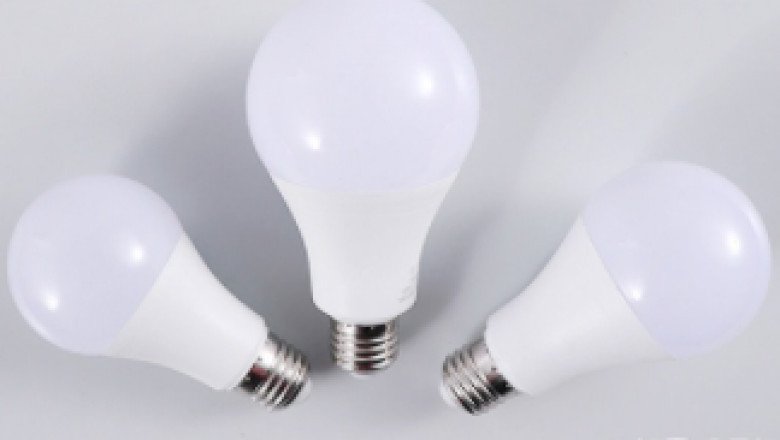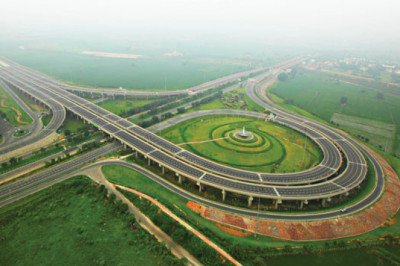views
How Are LED Lights Better For The Environment?
Have you ever wondered what kind of light bulbs are best for the environment?LED lights? CFLs? Or incandescent?
In a three-part study sponsored by the Department of the Environment, there is no doubt that LED lights are significantly better for the environment than other lighting fixtures. The study considered a wide variety of factors and evaluated the extent to which each bulb affects our planet's air, water, soil and resources. Smart bulbs consume less energy, last longer, and use safer materials than any other bulb.

Low energy consumption of LED lights
When it comes to energy consumption, LED bulbs dominate.
Traditional incandescent bulbs consume a lot of energy, and in fact most of the energy lost is producing heat: up to 90%, which means only 10% of the energy can actually emit light.
Compact fluorescent lamps (CFLs) have a significantly lower heat loss coefficient, which is one of the reasons why they can produce the same amount of light with 75% less energy than traditional incandescent bulbs. Instead of using electricity to heat the filament, as incandescent lamps do, they pass electricity through a chamber to excite the mercury molecules inside to produce light.
While compact fluorescent lamps (CFLs) are very efficient in terms of energy use, LED lamps actually use 80 percent better energy than incandescent lamps. This is due in part to the fact that LED lamps have a solid-state structure, which means there are virtually no moving parts. Electric current is simply sent through a semiconductor that forces electrons to jump from one place to another, a process that results in the production of light.
These energy savings not only help reduce monthly electricity bills, but also help reduce global energy production and reduce carbon emissions. For example, in 2012 alone, for example, U.S. consumers saved more than $675 million by switching to LEDs, and a complete switch to LEDs by 2032 could save the U.S. more than $250 billion in energy costs.
The life of LED lights
Long life is the second most important environmental feature of smart bulbs. A typical incandescent bulb typically lasts about 1,000 hours, or about six hours of use per day, for about four months. CFLs offer a lifetime of about 10,000 hours, or about 4 1/2 years at the same usage rate.
LED lights, on the other hand, have an amazing 25,000 hours of use. This means that if you leave an LED light on for 6 hours a day, it will last nearly 11 ½ years, far longer than CFLs and especially incandescent bulbs.
The benefits of long-life bulbs are easy to see. Using one LED light for as long as about 33 incandescent bulbs means we don't have to produce as many bulbs, which also means less landfill use, lower production costs, less transportation consumption, which of course means cleaner air.
Mercury-free lighting with LED lights
Another important point about the environmental impact of LED bulbs is that they do not contain the same harmful substances as other bulbs (i.e., CFLs).
As we've noted before, fluorescent lamps use the interaction of mercury and electricity to create light. As many of you know, mercury can have some very bad effects on our health. Since mercury poisoning is most common when inhaled, broken fluorescent tubes need to be cleaned up immediately.
In fact, there are special treatment steps for fluorescent light bulbs to deal with this potentially deadly compound. Although the amount of mercury in fluorescent bulbs is now much lower than before, exposure to this element should be kept to a minimum.
LED lamps, on the other hand, do not contain mercury. While it is still important to watch out for broken smart bulbs, you don't have to worry about inhaling mercury during the cleanup process.
Other features of LED lights
While the energy consumption, longevity and safe materials of smart bulbs are among the main reasons why they are environmentally friendly, they have a number of other features.
LED lights have a more focused light distribution than other bulbs. While incandescent and fluorescent bulbs emit light in all directions, LED lights can illuminate an area without affecting the surrounding environment. Think of the other bulbs as a torch, and the LED lights as a spotlight. This means that instead of having to use eight incandescent bulbs to light up a room, you can use five properly placed smart bulbs in five locations to achieve the same effect.
We are a professional supplier of LED lamps and lanterns, selling related LED lamps and lanterns including LED bulbs, if you are interested in this, please pay attention to Xinjie Lighting Co.











